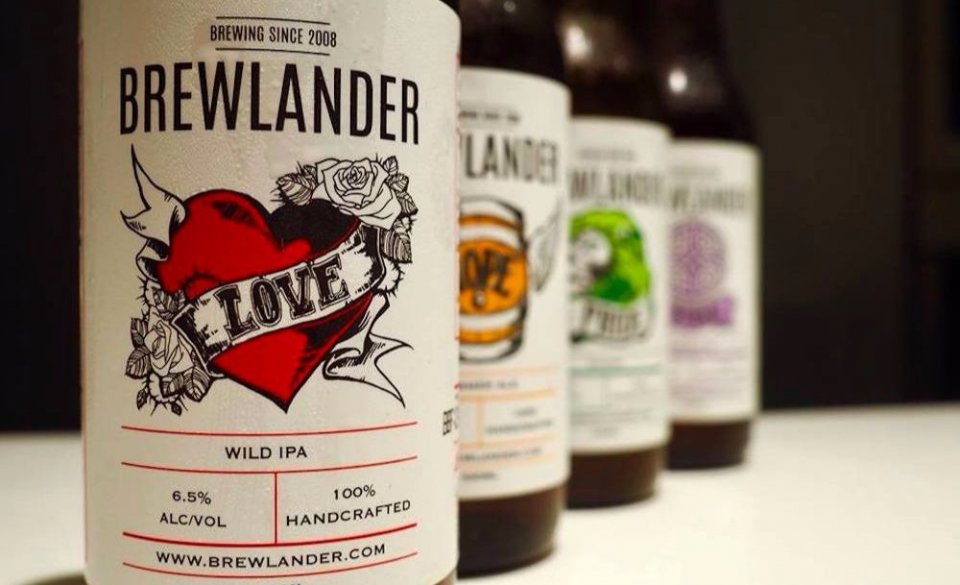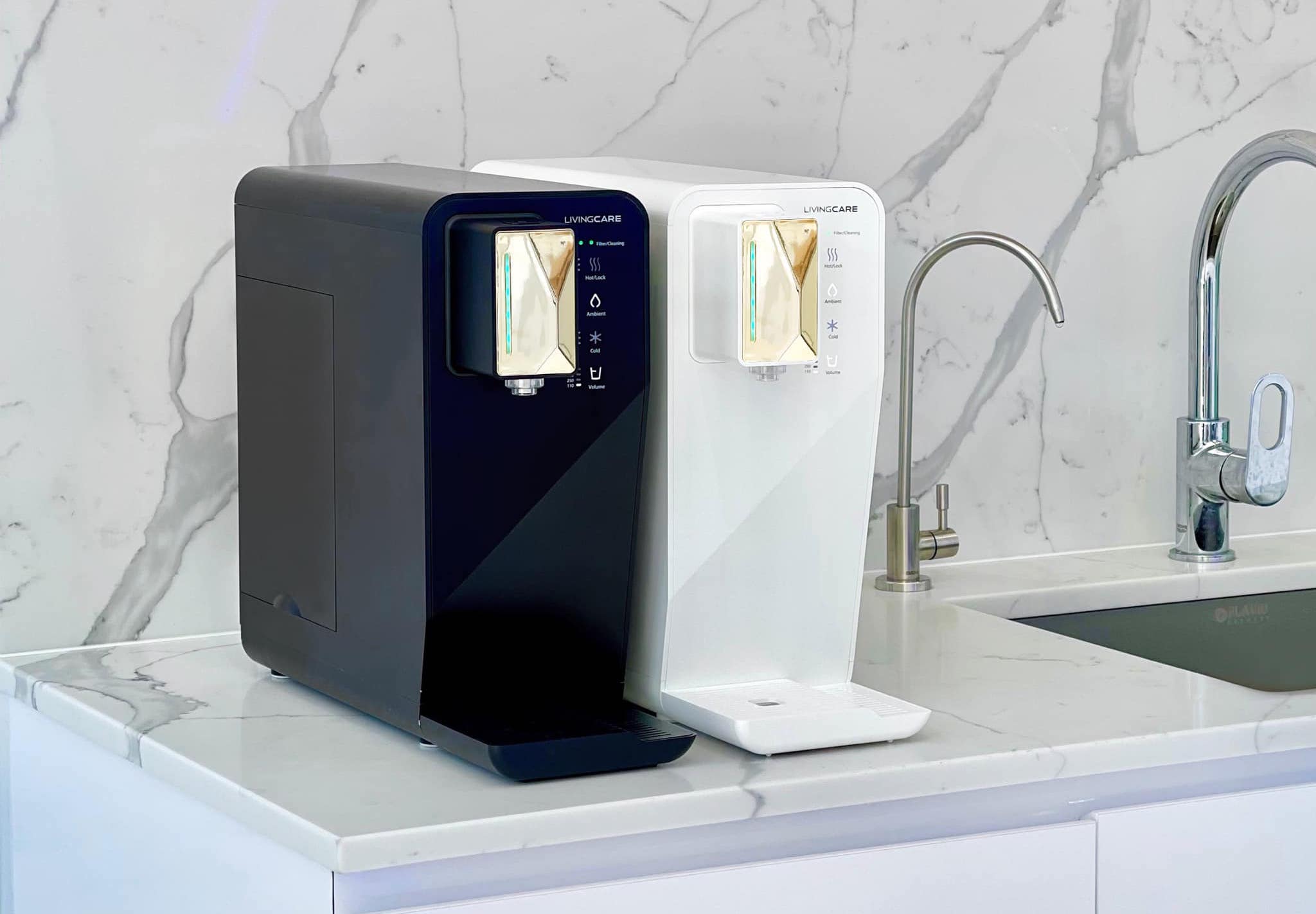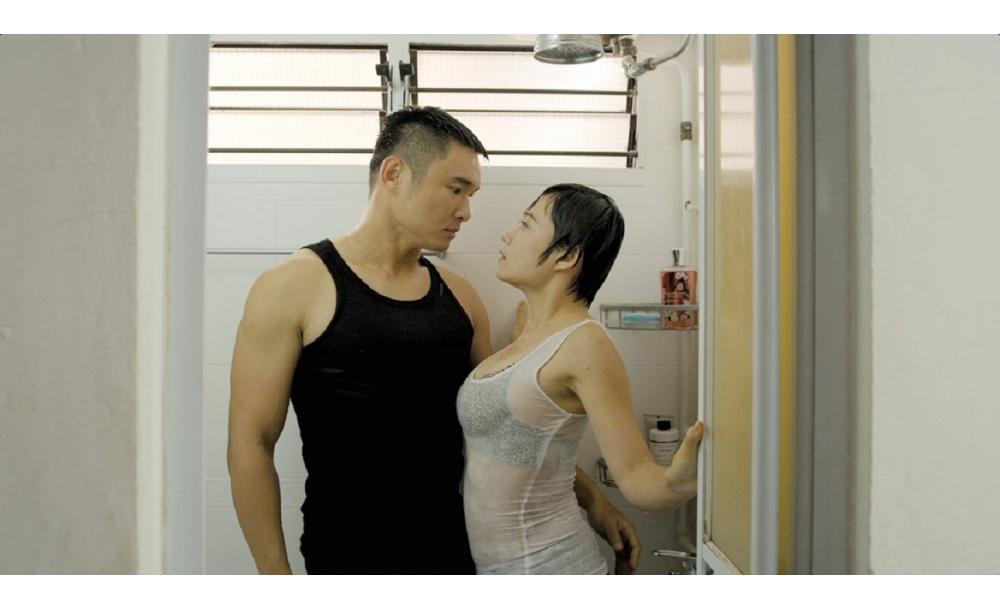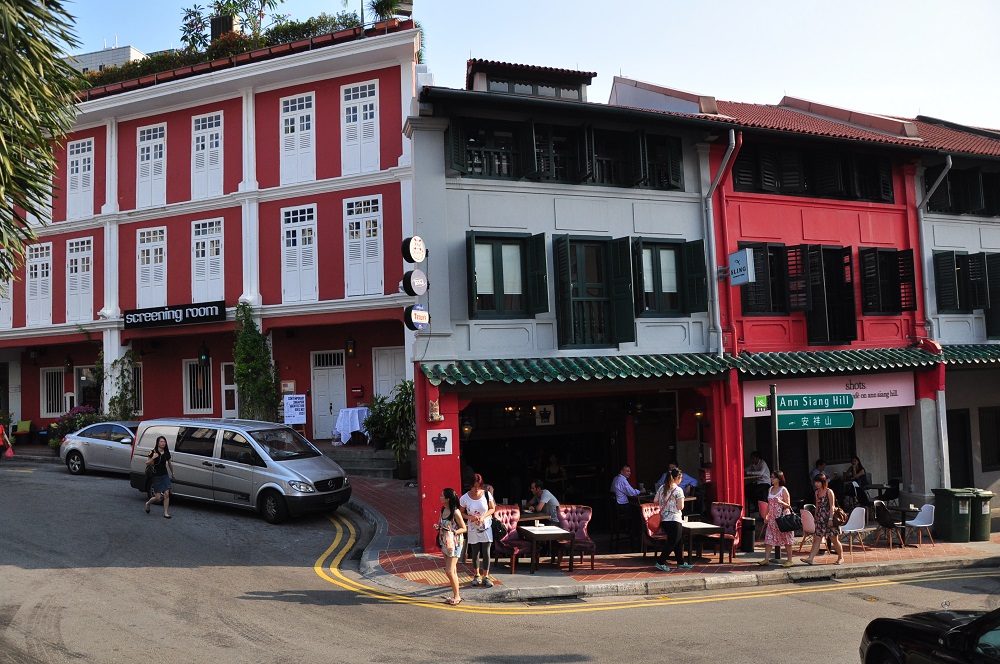“It’s all about understanding how the yeast will behave, like understanding a woman,” John Wei begins, without batting an eyelid.
“Recipes are very overrated; it’s how you treat the yeast. As a brewer you want to provide the right kind of environment for the yeast to do its job, to coax it to produce the flavors we want.”
Such fierce dedication to a living micro-organism that doesn’t necessarily love you back might seem a bit strange, but then again it comes with the territory. 35-year-old John Wei goes by many self-given names—Yeast Whisperer, Beer Jedi (the latter is printed on his namecard)—but he’s best known as the brains behind the brew at local craft beer label Brewlander & Co.
The label, which is famously fronted by local celebrities Daniel Ong and Allan Wu, launched in March this year. The name is Wei’s own namesake, which seems apt seeing as he is the one and only brewer in the company. Every one and a half months, he flies to Phnom Penh, Cambodia, where the brewhouse they’ve rented for use is located, to personally oversee the brewing from start to finish.
“People are surprised to find out I stay for that long a period of time, because their idea of brewing is that you brew a beer in just one day,” he said. “But beer only happens when you introduce yeast; and the yeast ferments the beer for up to seven days. So I have to be there everyday to do all the lab work, and tasting.”
It’s little details like this that reveal the heart behind Brewlander. For one, Wei doesn’t believe craft beer should advocate any form of exclusivity. To him, beer is a “working man’s drink” that should be for everybody. Sipping from a glass of Brewlander Love—a fruity pale ale that is the label’s top-seller—Wei shares his vision for growing the local craft beer scene. Unsurprisingly, it starts with going on the ground to improve beer literacy.

“The biggest obstacle right now is that people would question why a craft beer is more expensive than your commercial, mass-produced beers,” he says.
“So it’s the responsibility of everyone in this ecosystem—from the brewers to the distributors, to the vendors, even the beer servers—to let the customer understand why they’re paying a little bit more for craft beer, and why it’s worth paying that bit more.”
Brewlander certainly doesn’t discriminate in where it stocks. The label supplies to hawker center stalls, bars and hotels—anywhere that supports and understands what craft beer is about.
And despite his fame within the local craft beer community, Wei is all modesty. He sees himself as part of a second wave of local homebrewers, having started it as a hobby in 2008, a few years after homebrewing was first legalized here in 2005. It took almost five years of trial-and-error before he started competing in local competitions like the iBrew Challenge—and winning. Today, he’s one of the few homebrewers from his “time” to still be active in the local beer scene.
“When I first started there weren’t a lot of local homebrewers—and then there weren’t a lot of good local homebrewers,” he muses.
So wouldn’t that make him one of the first few to pioneer craft beer in Singapore? “In a sense lah, in a sense,” he admits defeatedly.
When he’s not fussing over yeast in Cambodia, Wei spends his days hosting beer tastings, training new staff, and meeting interested stockists. Brewlander may just be five months old, but response has been good, according to the former sales developer. Customers have given feedback that they look forward to drinking unique beers from the brand, something Wei is firm has been their goal since day one.
His most recent project was a collaboration with Chinese restaurant Si Chuan Dou Hua—a dry, crisp German Kolsch infused with Chinese tea leaves. Freshly brewed, a limited three kegs of the beer will be available at Beerfest Asia 2017, where Wei is also hosting two craft beer workshops for all to attend.
It’s a significant change from his former lifestyle; Wei jokes that amid sleepless nights running a three-man start-up, “every month I’m the best employee of the month”. But the pace and rigor of being a new kid in the F&B industry is a worthwhile trade-off for getting to pursue his passion full-time.
And apart from the increased responsibility as a commercial brewer now, nothing has changed, really, in his journey to become the best Yeast Whisperer he can be. Speaking affectionately of fermentation processes and temperatures, it’s obvious Wei’s success has gone anywhere but his head:
“At the end of the day it’s the yeast that makes beer, not the brewer.”
Wei tells us more about the scene in Singapore and beer.
Is the craft beer scene in Singapore anywhere near its peak?
I’ve heard people say the market is very saturated now, but that’s because they’re looking at the past, from a historical point-of-view. But I think if you step out and look at it, craft beer in Singapore—I don’t think it’s even 1% of the market share. There remains a lot of work and potential to grow craft beer drinking, in terms of volume.
How are your brewing methods set apart from other local brewers?
The fundamentals of brewing are all the same, and have been for hundreds of years—there’s no need to reinvent beer. We don’t make our beers any different, it’s just that our fermentation is quite unique—how we treat the yeast, our fermentation profile. Most brewists try to limit and just work with one or two yeast strains in the whole brewing; we’re working with six to seven different strains. It’s like having six different children and knowing the temperament of each, and how to deal with them, how to work them the right way to give you the results you want.
And we don’t rush the beers. When it’s ready to release we try to release it as fresh as possible, or as close to the peak as possible.
What’s next in store for Brewlander?
Going forward there are a lot of beers that we really want to do—fun, exciting beers—but it’s also about striking a balance between the timing and whether people can accept what we want to introduce. So we’ve got to time the launches very carefully, and expose and grow people’s palates steadily, before they can accept something really wild and out there. There’s actually one very interesting one I want to do, but I can’t say it yet. But that one’s gonna be really fun.
In three ways, can you break down how to tell good beer from mediocre?
One, it has to be very clean and well-made without any off-flavors—like being too fruity when it’s not supposed to, or tasting too young. Two, balance. Three, drinkability—if I can have more than one glass of it, that shows me that it’s a beer that’s well-made.
If ever, what is your favorite coffeeshop brand of beer to drink?
Guinness.
Hear from the Yeast Whisperer himself on Aug 17 & 20 at Beerfest Asia 2017. Workshops are complimentary and registration is available on a first-come-first-serve basis here.





